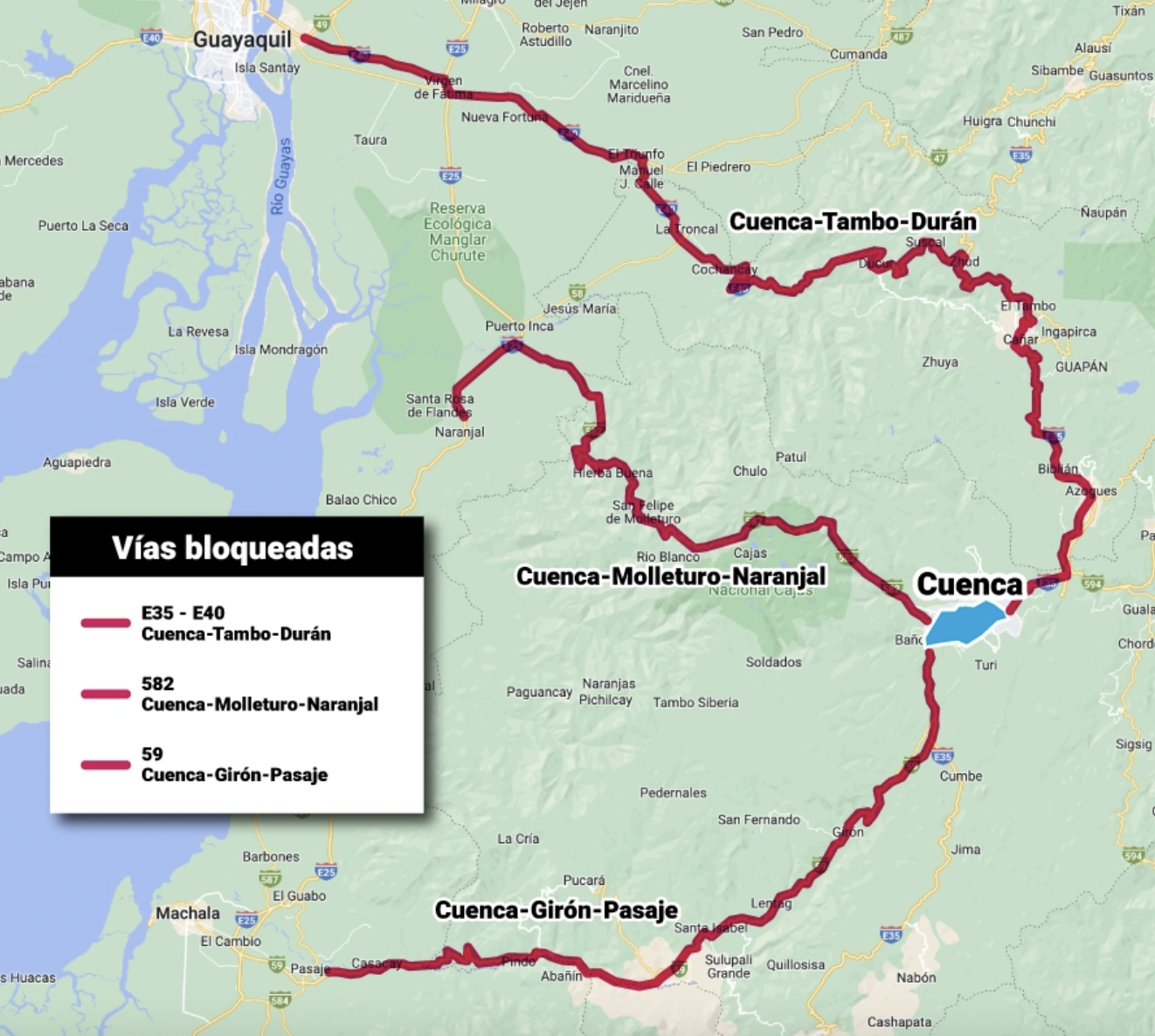Cuenca businessmen recognize the needs of the indigenous sector but question the strike. They say that the 18 days of lockdowns will delay the reactivation and deteriorate the labor market.
The 18 days of demonstrations, led by the Confederation of Indigenous Nationalities of Ecuador (Conaie), led to the paralysis of the Cuenca industry, an activity that represents 21% of the economy of the city.
The suspension of activities in the productive sector occurred in a forced manner due to the closure of three of the main roads that connect Cuenca with the Coast, the other southern provinces and the rest of the Sierra.
Rodrigo Cordero, president of the Chamber of Industries, Production and Employment of Cuenca (Cipem), said that these critical routes that were blocked for almost three weeks:
- Cuenca-Azogues-Zhud-Tambo-Durán. The most used route in the region for heavy transport and where trucks move with products, raw materials and fuels from Guayas and the rest of the Coast. This road crosses Cañar, which is why it is also the main connection between Azuay and Chimborazo, Tungurahua, Cotopaxi and the other provinces of the Sierra.
- Cuenca-Molleturo-Puerto Inca. Main connection route for passengers, tourism and some products from Guayas and the northern area of El Oro.
- Cuenca-Girón-Pasaje. This road is the main connection route between Azuay and El Oro. But closures were set up before the ‘Y de Cumbe’, which is where the roads to the Coast and the Sierra divide, which also prevented the connection with Loja.
- The roads that connect Azuay with Morona Santiago also suffered temporary closures and traffic was irregular.
The sum of these closures put the Azuaya capital in a situation of siege, making it impossible for people and merchandise to enter or leave the province.
Among the industries that halted their activities were those that dedicated to the production of ceramics, appliances, processed foods and furniture. The strike also interrupted the production of textiles, paper and cardboard, dairy products, tires and cement.
Roadblocks also prevented the passage of food, oxygen and other medical supplies—everything that managed to enter Cuenca by land came through the so-called ‘humanitarian corridors’ that were enabled at the will of the protesters.
Because of this, the Government decreed a state of emergency for the provinces of Azuay, Imbabura, Sucumbíos and Orellana, on June 29th.
That declaration did not have much impact because on the afternoon of June 30th the government signed an agreement with the indigenous movements and the roads throughout the country were cleared.
Supplies and fuels
Although the strike ended, after the dialogue between the Government and Conaie, it will take a while for the Cuenca industry to resume operations.
Needed industrial supplies and fuels that the companies require to begin production again are delayed throughout the entire country.
One of the primary industrial fuels is liquefied petroleum natural gas which comes from the Bajo Alto Liquefaction Plant in El Oro.
Among the companies that will not be able to operate immediately are those dedicated to the production of ceramics, because the plants must prepare and light the ovens, says Cordero.
Less foreign trade
Due to the closures, companies in Cuenca were unable to market their products in other cities or export them for almost three weeks, since the roads to the main ports through which Azuay products leave -Posorja, in Guayas, and Puerto Bolívar, in El Oro – were closed.
Despite not having sent cargo, the companies have had to pay for the quotas they had reserved in the shipping companies, which means cost overruns and losses.
Exporters, in addition, must bear the penalties abroad for non-compliance with deliveries.
On average, the cost of sea freight for a 40-foot container to the United States is $5,000, explains the Ecuadorian Federation of Exporters (Fedexpor).
In total, the country’s export sector recorded losses of more than $85 million due to the strike.
Deferred recovery
The paralysis of the Cuenca industry will also postpone the recovery that the productive sector was registering, after the blow of the Covid-19 pandemic, says Cordero.
Between January and May 2022, Cuenca’s sales and exports reached $3.512 billion, according to the Internal Revenue Service (SRI). That equates to 1% growth versus pre-pandemic levels, i.e., January-May 2019.
The productive sector fears that this trend will be reversed in the coming months, as a result of the three weeks of national unemployment, which will lead to a deterioration in employment.
Six out of 10 people of working age had adequate employment in Cuenca, between January and March 2022, according to the latest National Survey of Employment, Unemployment and Underemployment (Enemdu).
In the last year, Cuenca has generated more jobs than any city in the country.


0 Comments